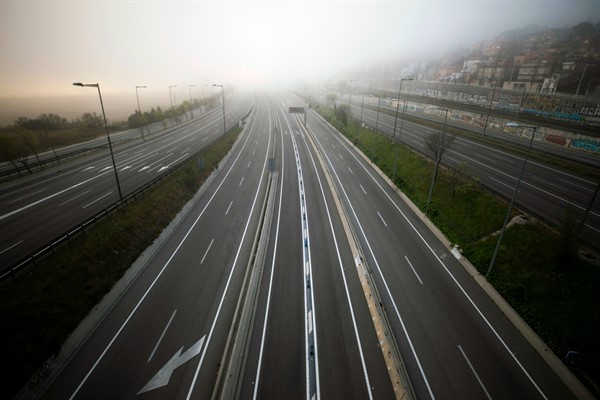In the months since the coronavirus pandemic effectively shut down large parts of the world, the changes to the environment have become one of the most visible backdrops to life under lockdown. Suddenly blue skies have provided a welcome setting for more varieties of birds, whose songs can now be heard without the roar of airplanes and car traffic. From Istanbul to New Delhi, vistas reappeared that no one alive remembered seeing. Animals started exploring what had once been their usual habitats, with flamingoes venturing in Mumbai, deer clambering through East London, and all manner of animals strolling into cities where no one had ever seen them outside of a zoo.
But beyond the cleaner air and pastoral scenes drifting into normally bustling urban landscapes, a new and complicated political reality has emerged for environmental groups and green parties, which now face a world with upended priorities. As countries emerge from the shutdowns that aimed to slow the contagion, plans to revive economies at all costs have soared to the top of the political agenda in country after country. In many cases, accepting economic sacrifices for the sake of the environment looks less appealing and less politically viable than it was before the coronavirus seized the planet.
Behind those indelible images of curious animals in new surroundings is hard data about the pandemic’s environmental and economic impact. The International Energy Agency predicts that global energy demand will fall steeply in 2020. A projected drop of 6 percent—seven times the size of the drop during the 2008 financial crisis—would reverse the past five years of demand growth. Not all of that decline in energy use is due to the virus; some of it is because the United States had a warmer-than-average winter—perhaps related to climate change—which required less heating oil and other fuel earlier in the year. But most of the drop in energy demand is due to the pandemic, which has driven down consumption of almost all forms of fuel. Demand for coal could drop by 8 percent this year, according to the IEA, the biggest decrease since World War II. Yet demand for renewable energy has stayed mostly unchanged, because energy grids prioritize use of renewable fuels, according to the IEA, partly because of the lower “marginal cost” for wind, solar and hydroelectric generation compared to traditional fossil fuel power plants.

